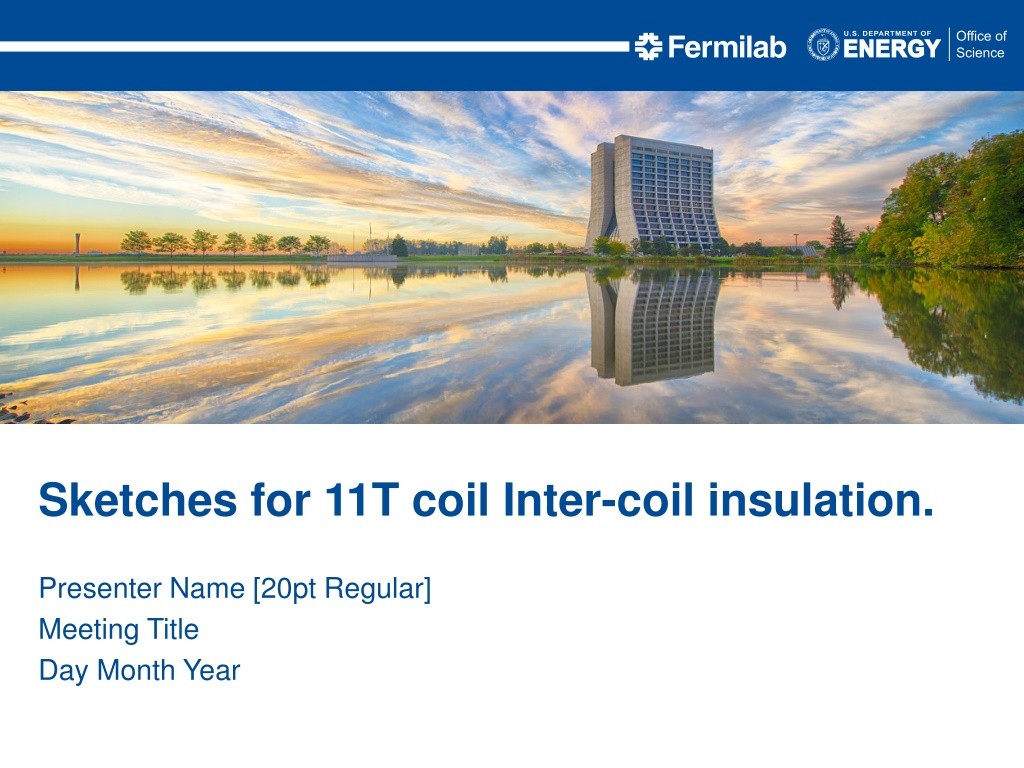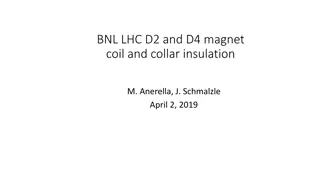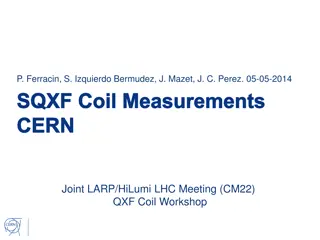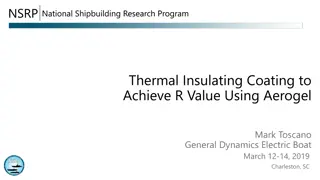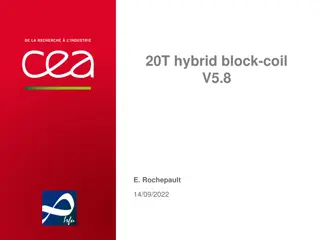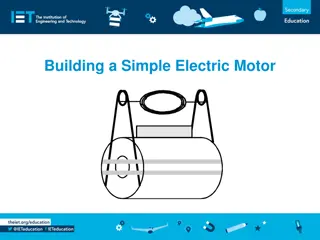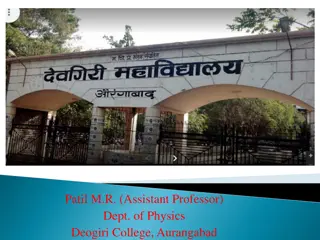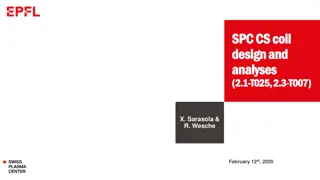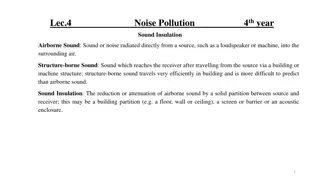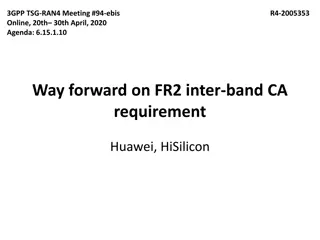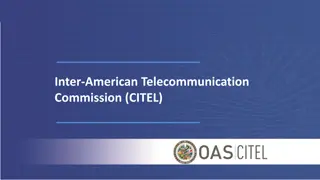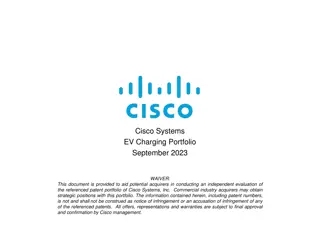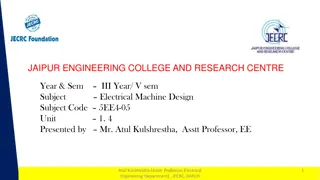Coil Inter-coil Insulation Techniques Overview
The presentation discusses the challenges and solutions for inter-coil insulation in a tight space, emphasizing the importance of careful design to meet insulation requirements. Suggestions include using FEP layers, polyimide elements, and additional glass layers for robust insulation. The design considerations aim to create a reliable and efficient coil system while maximizing insulation space and minimizing errors.
Download Presentation

Please find below an Image/Link to download the presentation.
The content on the website is provided AS IS for your information and personal use only. It may not be sold, licensed, or shared on other websites without obtaining consent from the author. Download presentation by click this link. If you encounter any issues during the download, it is possible that the publisher has removed the file from their server.
E N D
Presentation Transcript
Sketches for 11T coil Inter-coil insulation. Presenter Name [20pt Regular] Meeting Title Day Month Year
Potted Coil Finish Detail Potted S2 Glass (125 m) Trace (50+50 m) Trace (50+50 m) Potted S2 Glass (125 m) Insulated Cable Thickness (15.4mm) 2 9/24/2024 Presenter | Presentation Title or Meeting Title
Inter-coil insulation is rather tight With coils as shown, there is only .5mm for traces and all coil to coil insulation. This includes the typical 5 mil glass layer L3&4 L1&2 So when we add 10 mils of glass and 10 mils of Kapton, we have no room for error. L3 ID (excl ins) = 61.806 L2 OD (excl ins) = 61.306 3 9/24/2024 Presenter | Presentation Title or Meeting Title
Nominal Gap (um) 500 Default Thin Glass Single Trace No Glass NG/ Single Trace Thin Glass/ Single Trace Old Style thickn ess (um) Attached to coil layer thickness (um) Thickness (um) thickness (um) thickness (um) thickness (um) thickness (um) Layer Item Item Item Item Item Item Item trace polyimide Trace Element 45Protective Glass Coil to Coil Insulation Protective Glass 50Trace Element 50trace polyimide 2 x 3 mil loose polyimide loose trace element 145 355 2 2 2 1trace polyimide 2Trace Element 3Protective Glass Coil to Coil Insulation 5Protective Glass 6Trace Element 7trace polyimide 50trace polyimide 50Trace Element 125Protective Glass Coil to Coil Insulation 125Protective Glass 50Trace Element 50trace polyimide 50trace polyimide 50Trace Element 45Protective Glass Coil to Coil Insulation 45Protective Glass 50 50 50trace polyimide 50Trace Element 125Protective Glass Coil to Coil Insulation 125Protective Glass Trace Element trace polyimide 50 50 Protective Glass Coil to Coil Insulation Protective Glass 50Trace Element 50trace polyimide 125Protective Glass Coil to Coil Insulation Protective Glass 50Trace Element 50trace polyimide 125 4 3 3 3 125 150 25 Sum Space for Stuff Heater to conductor (incl cab ins) Robustness Rating (5-10, 5 is standard) Gap Comfort rating 450 50 290 210 350 150 200 300 225 275 425 75 200 200 200 200 200 200 350 2.3333333 4.5833333 0.8333333 1.1666666 4.1666 5 33 33 33 2.5 67 67 0.5 2.1 1.5 3 1.5125 3.55 0.75 4.1416666 Total Comfort 2.5 4.9 6.875 2.5 3.78125 67 3.125 Notes: There really isnt any room for error here. We could use a slip plane layer of FEP between coils though this material is not great in radiation environments. If we are careful in ou trace design, we can buy ~50um additional space and keep at least 1 layer of polyimide between elements and poles/ other coil voltage taps. The FEP/ inter-coil can be counted as additional insulation. Being clever witht the traces can also buy assuming 'few pinholes' 125 um of g10 Notes: We havent used this glass, though I do have quite a bit available downstairs. If the additional gap is filled with insulating material, and trace design eliminates overlapping elements, that equates to 210 + 50 um of sheet material and 2 layers of 45 um glass, good for one layer assuming few pinholes removing voltage taps from L3 buys some additional room. For ~150 um of polyimide and 1 (of 2) 5 mil sheets of g10 Leave trace elements exposed, possibly even mold released. Potentially less robust. Make up for missing glass with gobs of kapton. Coil will be covered with 5 mil glass, single layer does not protect against pinholes. replace one trace with a sheet of thin glass. Less robust. Heaters are located between sheets of 5 mil kapton located between layers. Trace routing for Layer 2 is routed here as well. Heat diffusion to coil from heaters is greatly impeded by 5 mil s2 and 5 mil kapton. With no adhesion. 4 9/24/2024 Presenter | Presentation Title or Meeting Title
